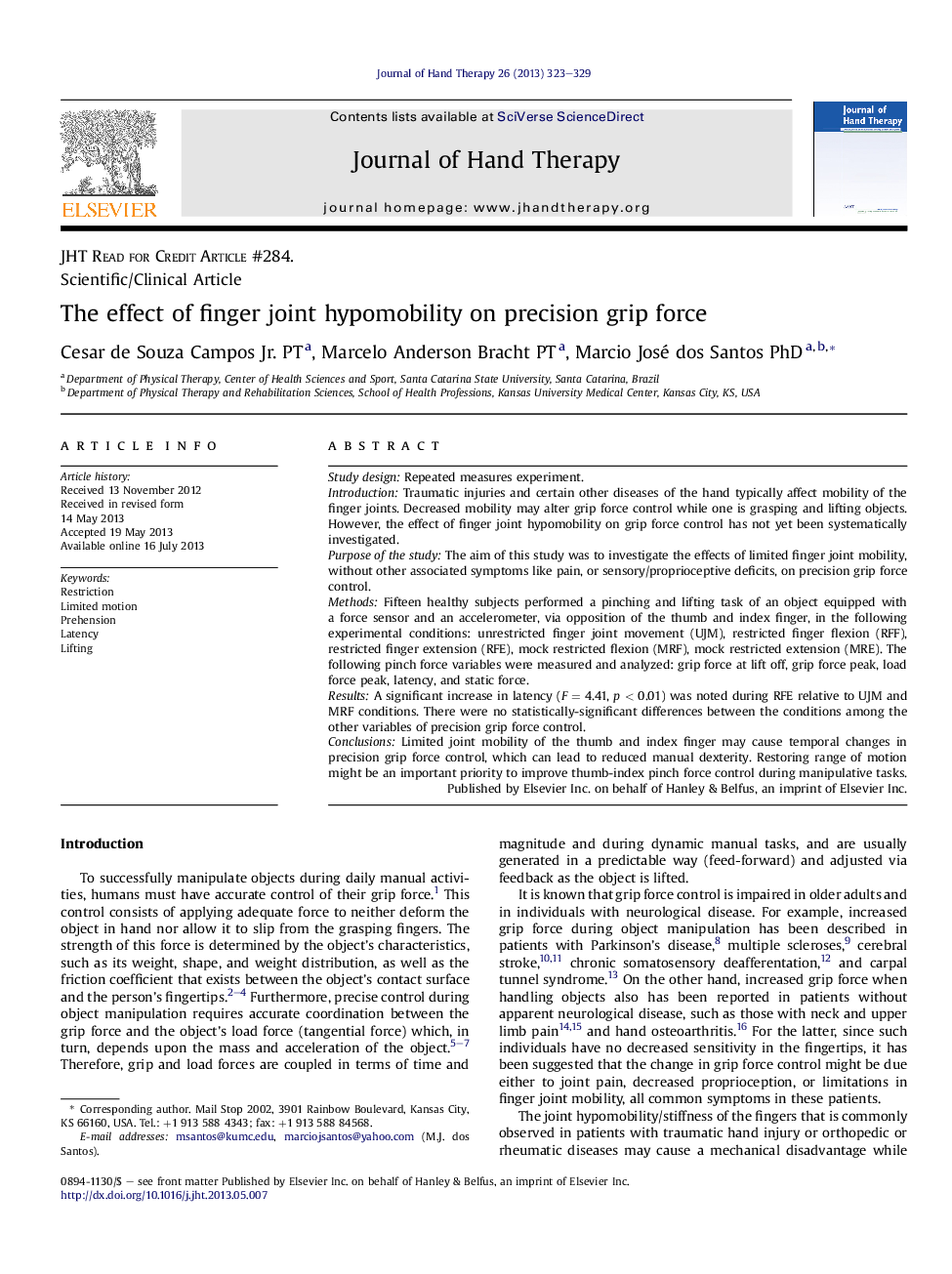| Article ID | Journal | Published Year | Pages | File Type |
|---|---|---|---|---|
| 2691960 | Journal of Hand Therapy | 2013 | 7 Pages |
Study designRepeated measures experiment.IntroductionTraumatic injuries and certain other diseases of the hand typically affect mobility of the finger joints. Decreased mobility may alter grip force control while one is grasping and lifting objects. However, the effect of finger joint hypomobility on grip force control has not yet been systematically investigated.Purpose of the studyThe aim of this study was to investigate the effects of limited finger joint mobility, without other associated symptoms like pain, or sensory/proprioceptive deficits, on precision grip force control.MethodsFifteen healthy subjects performed a pinching and lifting task of an object equipped with a force sensor and an accelerometer, via opposition of the thumb and index finger, in the following experimental conditions: unrestricted finger joint movement (UJM), restricted finger flexion (RFF), restricted finger extension (RFE), mock restricted flexion (MRF), mock restricted extension (MRE). The following pinch force variables were measured and analyzed: grip force at lift off, grip force peak, load force peak, latency, and static force.ResultsA significant increase in latency (F = 4.41, p < 0.01) was noted during RFE relative to UJM and MRF conditions. There were no statistically-significant differences between the conditions among the other variables of precision grip force control.ConclusionsLimited joint mobility of the thumb and index finger may cause temporal changes in precision grip force control, which can lead to reduced manual dexterity. Restoring range of motion might be an important priority to improve thumb-index pinch force control during manipulative tasks.
